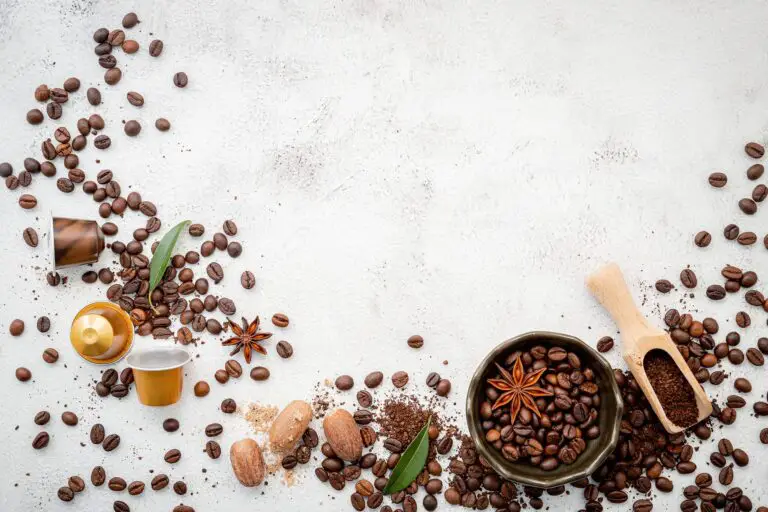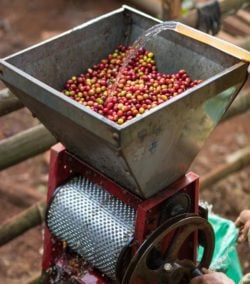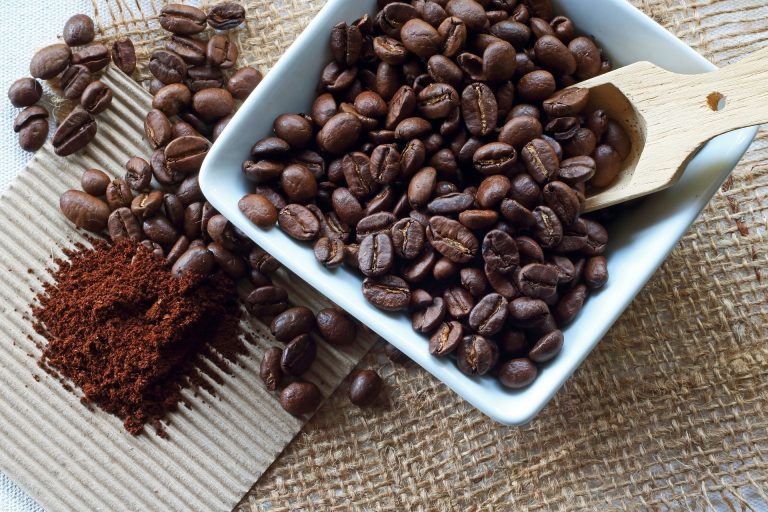Coffee Processing - How Is Coffee Processed?
After the harvest, the coffee cherry is not immediately suitable for consumption. The fresh coffee is also not transportable and has a longer shelf life because the entire casing has to be removed first. Only then is the coffee bean marketable, and there are mainly two different processing methods to achieve this: wet and dry processing. This process removes most of the water from the bean, along with the pulp, skin, mucilage, silver skin, and parchment. In the end, the dry, clean coffee bean remains.
The world of coffee, from cultivation to harvest, from processing to roasting, is not only particularly multifaceted but also extremely complex. Before you can enjoy the delicious hot drink, this high-quality natural product has gone through many processing steps. An important process in this context is processing. You will soon find out how the processing of coffee beans works.
The Different Types Of Coffee Processing
First of all, the coffee cherries have to be harvested. The subsequent step is the processing of raw coffee because the processing of the coffee after harvesting has a decisive influence on the taste of the roasted coffee.
Experts distinguish between four causes that are responsible for the taste of the coffee:
- The growing conditions, i.e. the environment in which the coffee thrives
- The processing
- The roast
- The preparation
Best Coffee Gear Guides

Best Espresso Machines

Best Coffee Makers

Best Coffee Grinders

Best Coffee Beans
There Are Three Processes Within The Coffee Processing

1. The Wet Processing
This process requires 40 gallons of water for 2.2 pounds of raw coffee. The fresh coffee cherries are first freed from impurities (by hand or mechanically) and then pre-sorted in flumes or water tanks. The coffee cherries then get into the so-called pulper. This machine is used to squeeze the pulp from the coffee beans without damaging them. However, the bean remains surrounded by a layer of mucus – what remains is the parchment skin. The excess pulp is also separated from the bean at the same time. Finally, the depulped coffee goes into a fermentation tank.
The so-called fermentation process removes the residual mucus still adhering to the parchment skin and makes it washable. The fermentation is also affected by the enzymes present in the coffee. Absolute cleanliness of all aggregates and systems is necessary because a bean that has been exposed to fermentation for too long can quickly become a “stinky bean” and spoil the entire coffee batch. If the wet processing is particularly complex, the effort is rewarded with higher quality. After fermentation, the coffee is washed in washing tanks and then has to be dried for about 10 to 15 days.
2. The Dry Processing

In this process, the whole coffee cherry has to dry out long enough for the bean inside to be easily peeled out without leaving any residue and, of course, also dry. This treatment process is practically also practiced by nature, which is why the dry method is actually considered to be the much older one. To dry, the coffee cherries must be as evenly ripe as possible and spread out on paved or concrete drying surfaces.
To prevent the cherries from rotting, the spread layer should not be too thick. In this process, the fruit must be constantly moved and turned. The goods to be dried must be well protected from strong temperature fluctuations and rain. It usually takes 3 to 5 weeks for the entire coffee cherry to dry completely. A freshly picked coffee cherry even consists of up to 60% water. The residual moisture after processing is then only about 12%. Automatic rapid drying is also possible, but this is complex and very expensive.
3. Semi-Dry Processing
Processing professionals speak of “pulped natural” here. So the beans are de-pulped. This means that the pulp of the coffee cherry is removed from the coffee bean and then processed naturally. As a result, not the whole coffee cherry is dried here, but only the de-pulped kernel. There is also no fermentation in this process, as this process is also called.
What Is Fermentation Related To Coffee Processing?
To put it simply, fermentation is the conversion of organic substances. These are often converted with the help of fungal, bacterial, or cell cultures and by adding enzymes called “ferments”. Fermentation is of great importance for coffee production, as this process breaks down the tannins contained in the coffee beans. Bacteria are involved in the fermentation of coffee beans. The duration depends on the temperature.
Coffee Fermentation And Its Importance
This process is used in the wet processing of coffee beans. The coarsely peeled beans are fermented using water. To do this, the pulp is first removed from the coffee cherries so that the beans are only surrounded by the parchment and silver skin. Then they are placed in a water bath for about 12 to 16 hours. This activates the fermentation process. The fermentation is responsible for the lively taste and the present acidity. However, the beans must not be fermented for too long, as the water in the tank can become worse due to the detached pulp residue.
In general, fermentation is of great importance for coffee. During the process, enzymes loosen the sticky residue that covers the parchment of the coffee beans. In addition, the process is necessary for the formation of the aroma substances, because this influences the taste properties and the quality of the coffee. Given how important fermentation is to flavor, today it is often carefully controlled to make the process smoother and slower.
Conclusion

Fermentation is the transformation of organic matter. It is particularly important for coffee, as flavorings are formed during the process quality and the taste characteristics affect the coffee. It only occurs with wet processing. In addition, there is
- The dry processing
- The semi-dry preparation
Disclosure: We use affiliate links in some of the products that appear on this page. This helps our site cover the costs of the site, Thanks for your support. Read more


